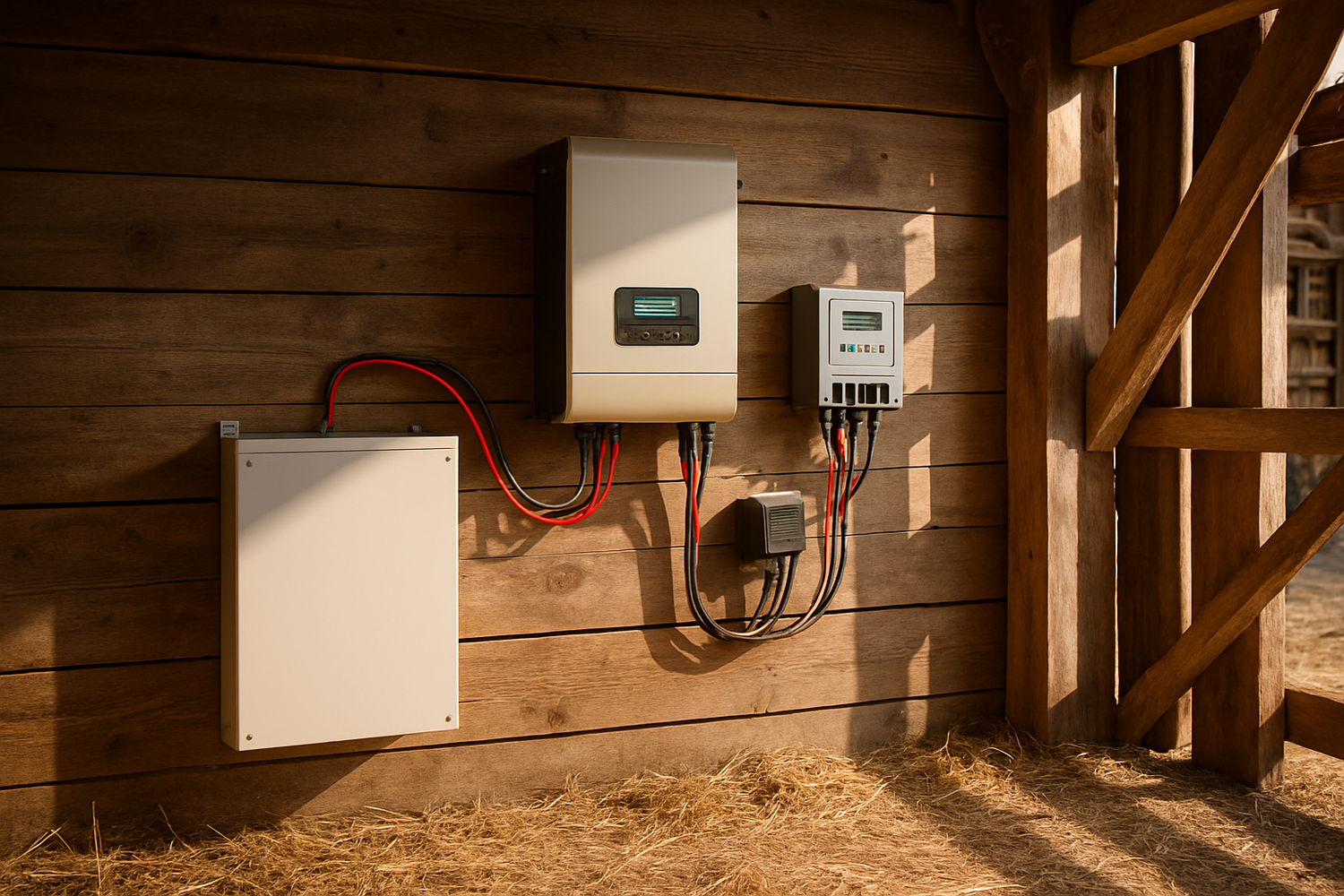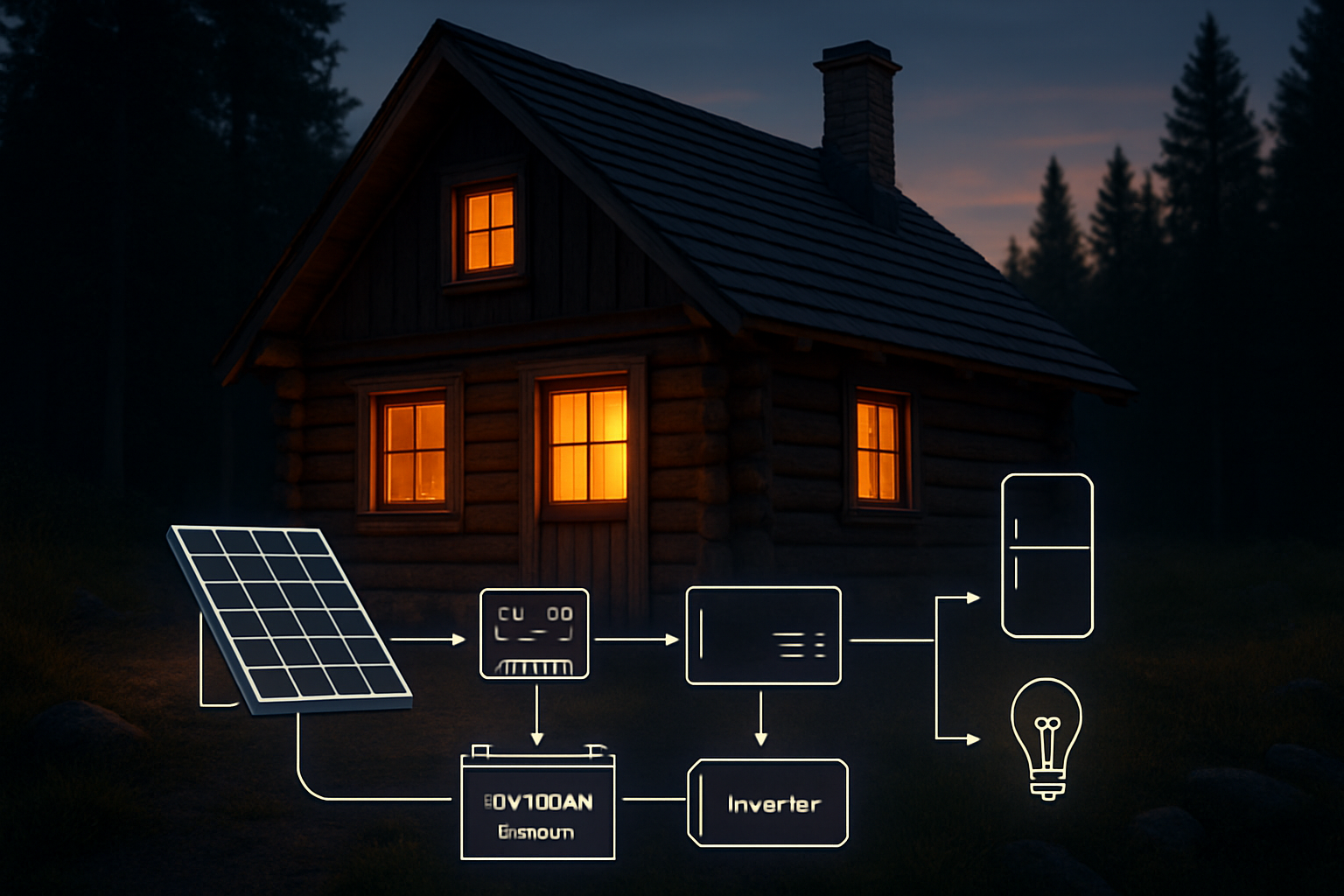Modern farms require consistent and reliable power for everything from water pumps to security systems. For agricultural operations in remote areas, extending the grid can be expensive and impractical. This case study explores a practical off-grid solar solution, centered around a 200Ah lithium battery, to meet the energy demands of a contemporary farm and secure its energy independence.
The Challenge: Meeting Modern Farming's Energy Demands
The energy needs of a farm are diverse and critical. Without a stable power source, daily operations can come to a halt, affecting productivity and profitability. Transitioning to renewable energy offers a path to self-sufficiency. According to a joint report by the Food and Agriculture Organization (FAO) and the International Renewable Energy Agency (IRENA), solar irrigation can significantly boost farmers' incomes and crop yields.
Identifying Key Power Needs
The first step in designing any off-grid system is to conduct a thorough energy audit. This involves identifying all electrical loads and calculating their daily energy consumption in kilowatt-hours (kWh). For a typical small-to-medium-sized farm, these loads often include water pumps, barn lighting, electric fencing, and security equipment. Irrigation pumps, in particular, can account for a large portion of a farm's total energy use.
| Appliance/Equipment | Power (Watts) | Daily Hours of Use | Daily Energy (kWh) |
|---|---|---|---|
| Shallow Well Water Pump | 750 W | 2 hours | 1.50 kWh |
| Barn LED Lighting (x5) | 100 W (20W each) | 6 hours | 0.60 kWh |
| Electric Fence Charger | 30 W | 24 hours | 0.72 kWh |
| Security Cameras (x2) | 20 W (10W each) | 24 hours | 0.48 kWh |
| Tool Charging Station | 100 W | 2 hours | 0.20 kWh |
| Total Daily Consumption | 3.50 kWh |
Why Grid-Tied Isn't Always an Option
For farms located far from existing utility lines, the cost of extending grid infrastructure can be prohibitively high. Furthermore, rural grids can be susceptible to weather-related outages, disrupting critical farm operations. An off-grid solar power system provides a dependable alternative, insulating the farm from grid instability and eliminating monthly electricity bills.
Designing the Off-Grid Solar System
A well-designed off-grid system consists of several key components working in harmony: the solar panels, a charge controller, the battery bank, and an inverter. Each part must be correctly sized to meet the farm's specific energy needs.
The Heart of the System: The 200Ah LiFePO4 Battery
The energy storage system is the core of an off-grid setup. For this application, a 12V 200Ah Lithium Iron Phosphate (LiFePO4) battery is an excellent choice. This battery provides a total storage capacity of 2.56 kWh (12.8V x 200Ah). LiFePO4 batteries offer significant advantages over traditional lead-acid batteries, including a longer cycle life (often exceeding 4000 cycles), higher efficiency, and a greater depth of discharge (DoD), allowing more of the stored energy to be used. Their stable chemistry also makes them a safer option for agricultural environments.
Sizing the Solar Array
To adequately charge the 200Ah battery and power the daily loads, the solar array must be sized correctly. The calculation involves considering the daily energy consumption, battery charging requirements, and the average peak sun hours for the farm's location. For a system needing to generate around 3.5 kWh daily, and accounting for system inefficiencies, a solar array of approximately 1.2 to 1.5 kW would be suitable, depending on the geographic location and typical weather patterns.
Selecting the Right Inverter and Charge Controller
An inverter converts the DC electricity stored in the battery to AC electricity that farm equipment can use. The inverter's size should be sufficient to handle the maximum simultaneous power draw from all appliances. A Maximum Power Point Tracking (MPPT) charge controller is also essential. It optimizes the power transfer from the solar panels to the battery, ensuring the most efficient charging possible and protecting the battery from overcharging.
Analyzing the Benefits and Long-Term Value
Implementing a solar-plus-storage system offers numerous advantages that extend beyond simple power generation. It represents a strategic investment in the farm's future resilience and financial health.
Achieving Energy Independence and Reliability
The most immediate benefit is freedom from the public grid. An off-grid system provides a stable, predictable power source, ensuring that critical operations like water pumping and security are never compromised by external power failures. This reliability is invaluable for modern agricultural businesses.
Financial and Operational Advantages
While there is an upfront investment, the long-term savings are substantial. Eliminating electricity bills and reducing reliance on costly diesel generators leads to a lower total cost of ownership. According to the International Energy Agency (IEA), the cost of electricity from solar PV has fallen dramatically, making it a highly competitive energy source. This trend, combined with the longevity of LiFePO4 batteries, ensures a strong return on investment.
Understanding Solar Storage Performance Metrics
To fully appreciate the long-term value of a lithium battery, it is helpful to understand key performance indicators. Metrics like cycle life, depth of discharge (DoD), and round-trip efficiency determine how much energy the battery can deliver over its lifetime. A deeper understanding of these metrics is crucial for evaluating long-term performance. You can find a comprehensive breakdown in this ultimate reference on solar storage performance.
A Forward-Looking Power Solution
This case study demonstrates that a well-planned off-grid solar system, anchored by a 200Ah lithium battery, is a powerful and viable solution for modern farms. It addresses the critical need for reliable energy, reduces operational costs, and promotes long-term sustainability. By harnessing solar power, farms can achieve energy independence and build a more resilient and profitable future.
Disclaimer: This article is for informational purposes only and does not constitute financial or investment advice. Consult with a qualified professional before making any decisions regarding solar system installation.
Frequently Asked Questions
How long will a 200Ah lithium battery last on a farm?
A 12V 200Ah lithium battery stores approximately 2.56 kWh of energy. The duration it lasts depends entirely on the power consumption of the connected equipment. For example, if a farm uses 1 kWh of energy per day, the battery could theoretically last over two and a half days without any sun. However, in a properly sized system, the solar panels will recharge the battery daily.
What can a 200Ah battery power on a farm?
A 200Ah LiFePO4 battery can power a variety of essential farm equipment. This includes water pumps, LED lighting for barns and outbuildings, electric fence chargers, security systems, ventilation fans, and charging stations for small power tools. It is ideal for powering critical loads that require consistent energy.
Is a LiFePO4 battery safe for an agricultural environment?
Yes, LiFePO4 batteries are considered one of the safest lithium battery chemistries. They are thermally stable, less prone to thermal runaway, and do not contain cobalt. Many are built with a rugged case and an integrated Battery Management System (BMS) that protects against overcharging, over-discharging, and short circuits, making them a reliable choice for demanding environments like a farm.





Leave a comment
All comments are moderated before being published.
This site is protected by hCaptcha and the hCaptcha Privacy Policy and Terms of Service apply.